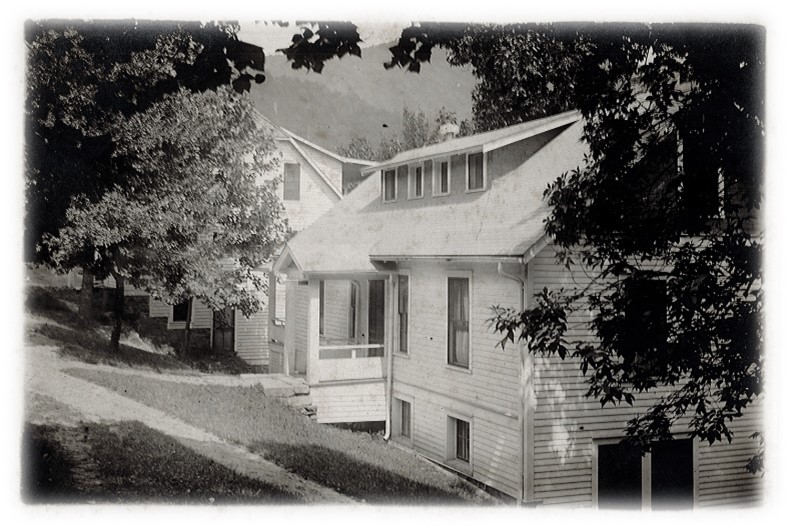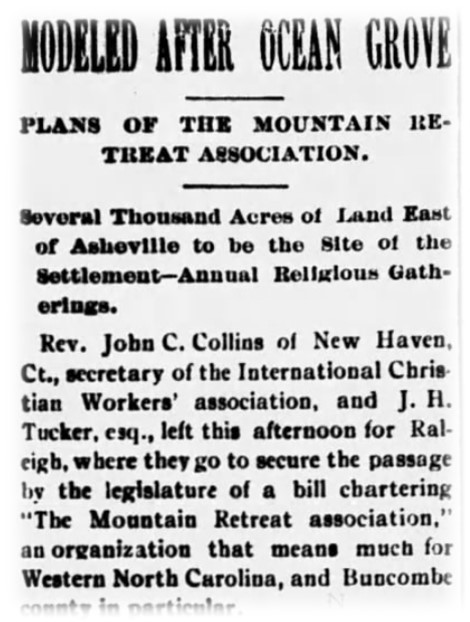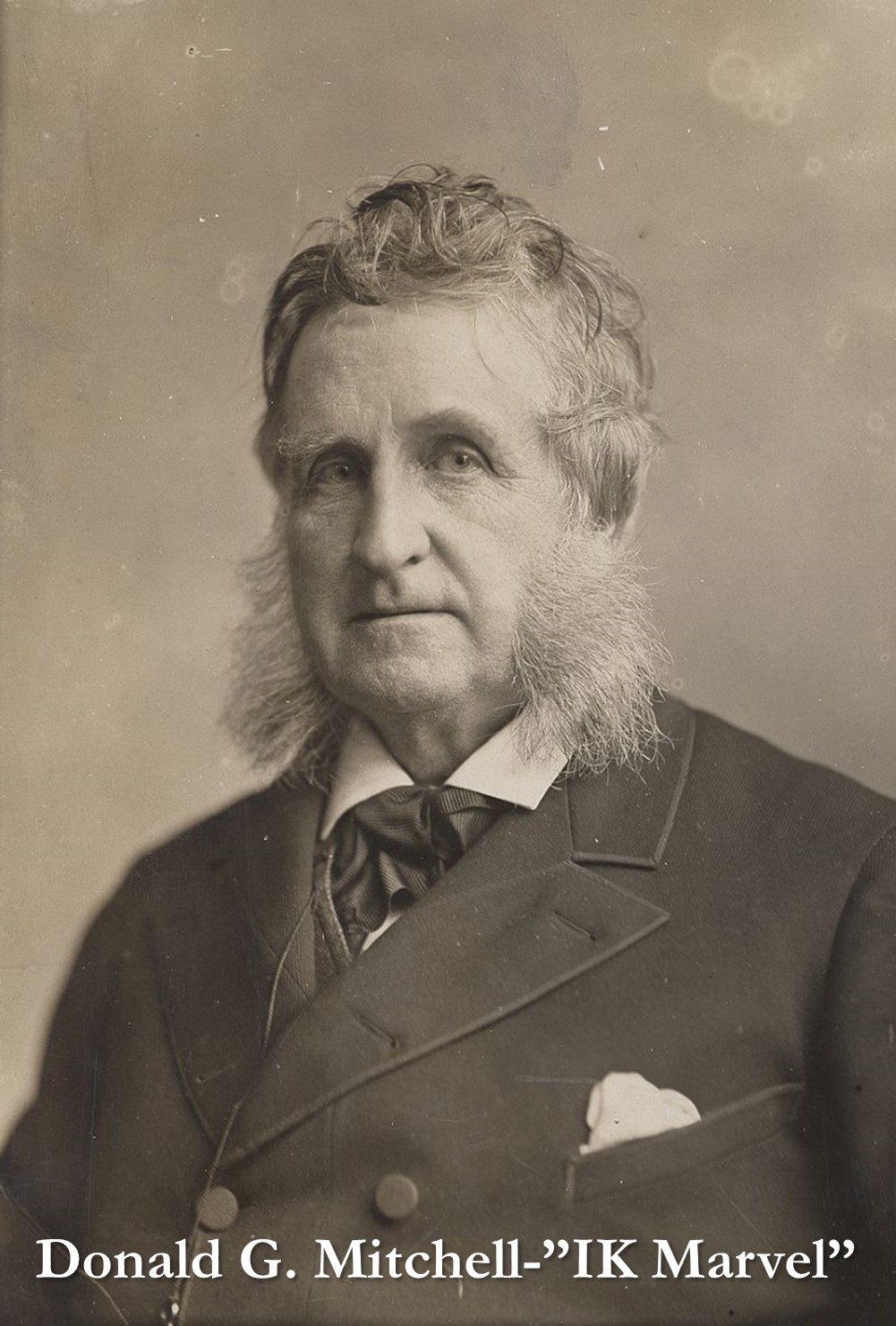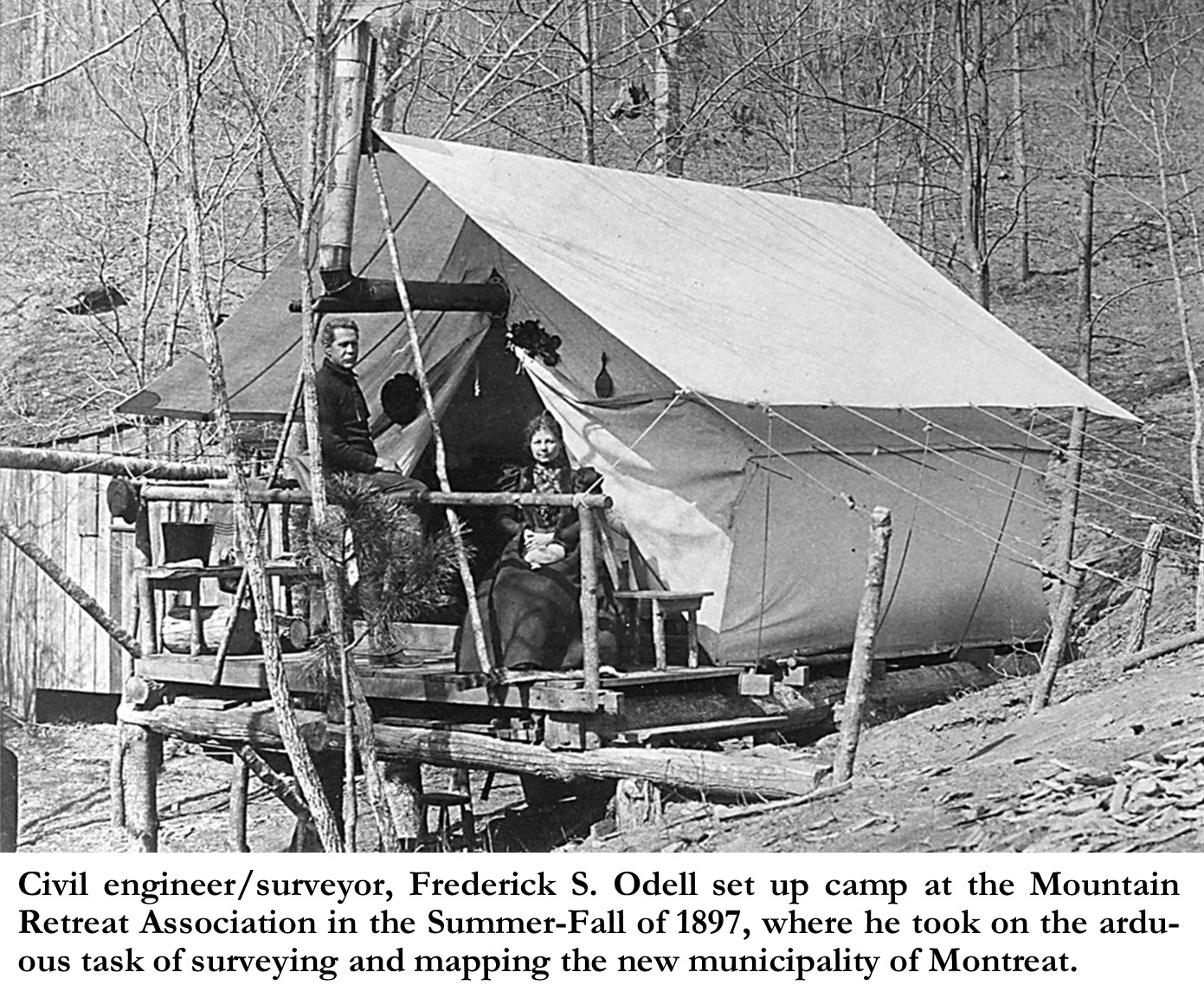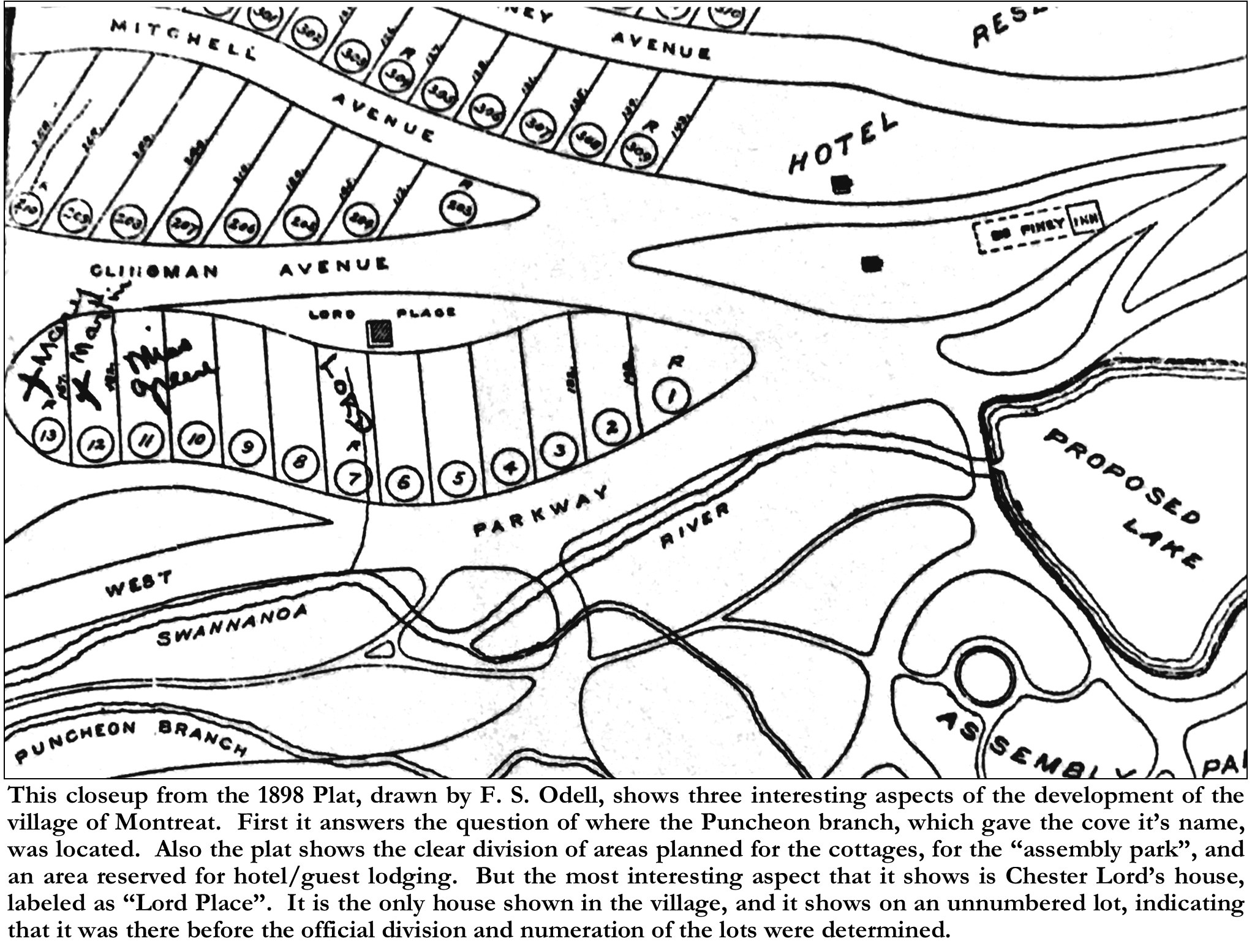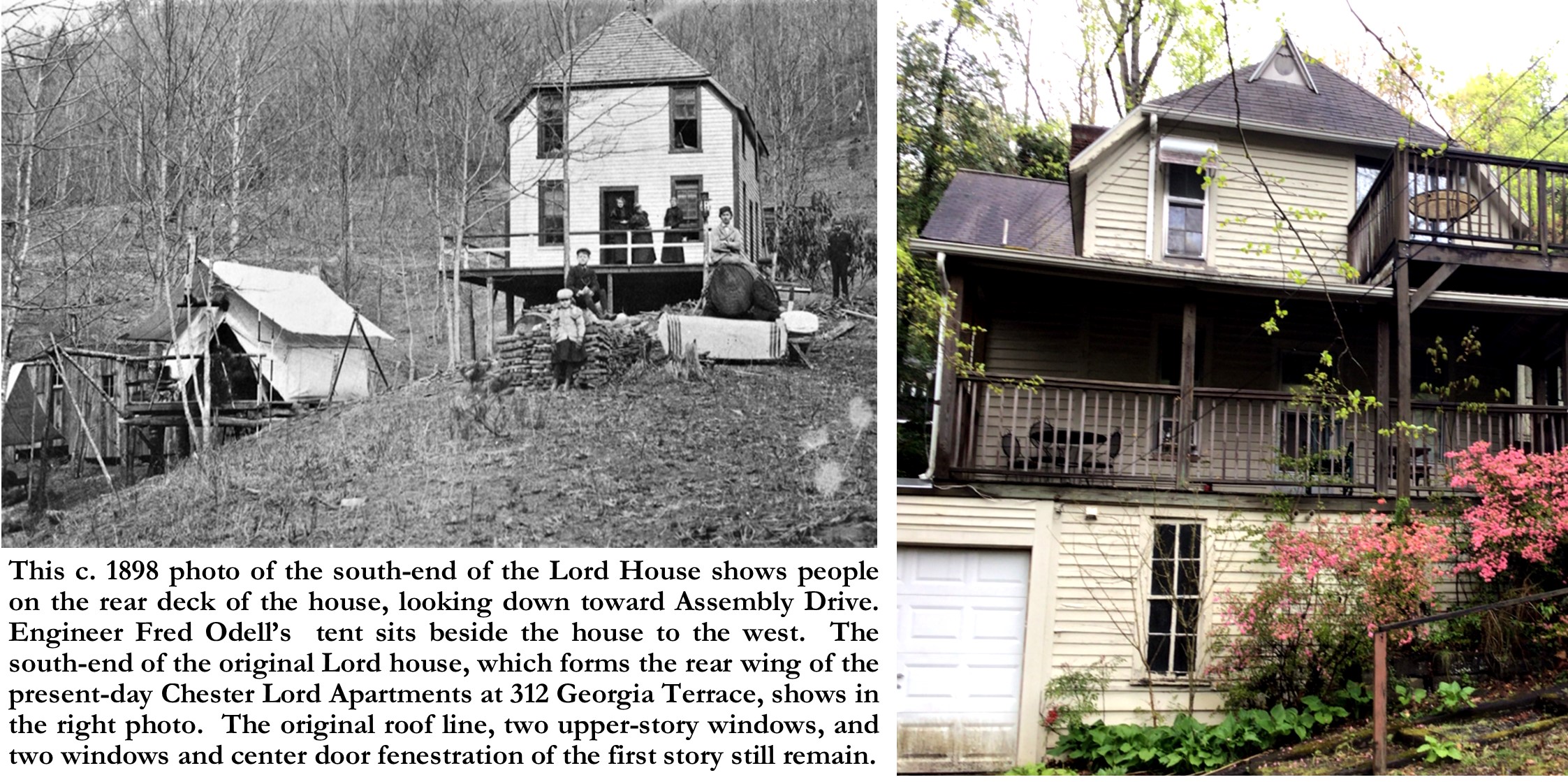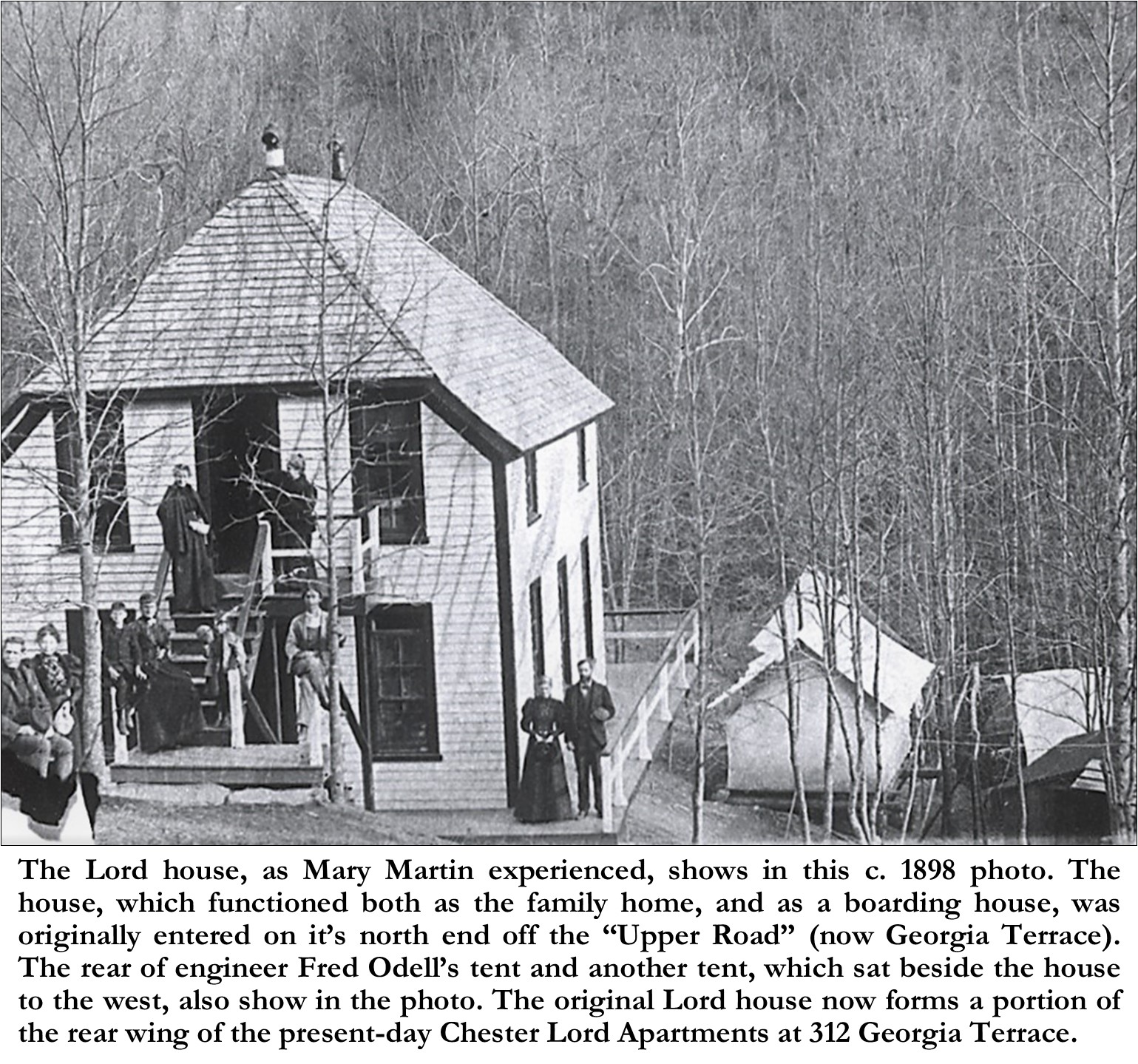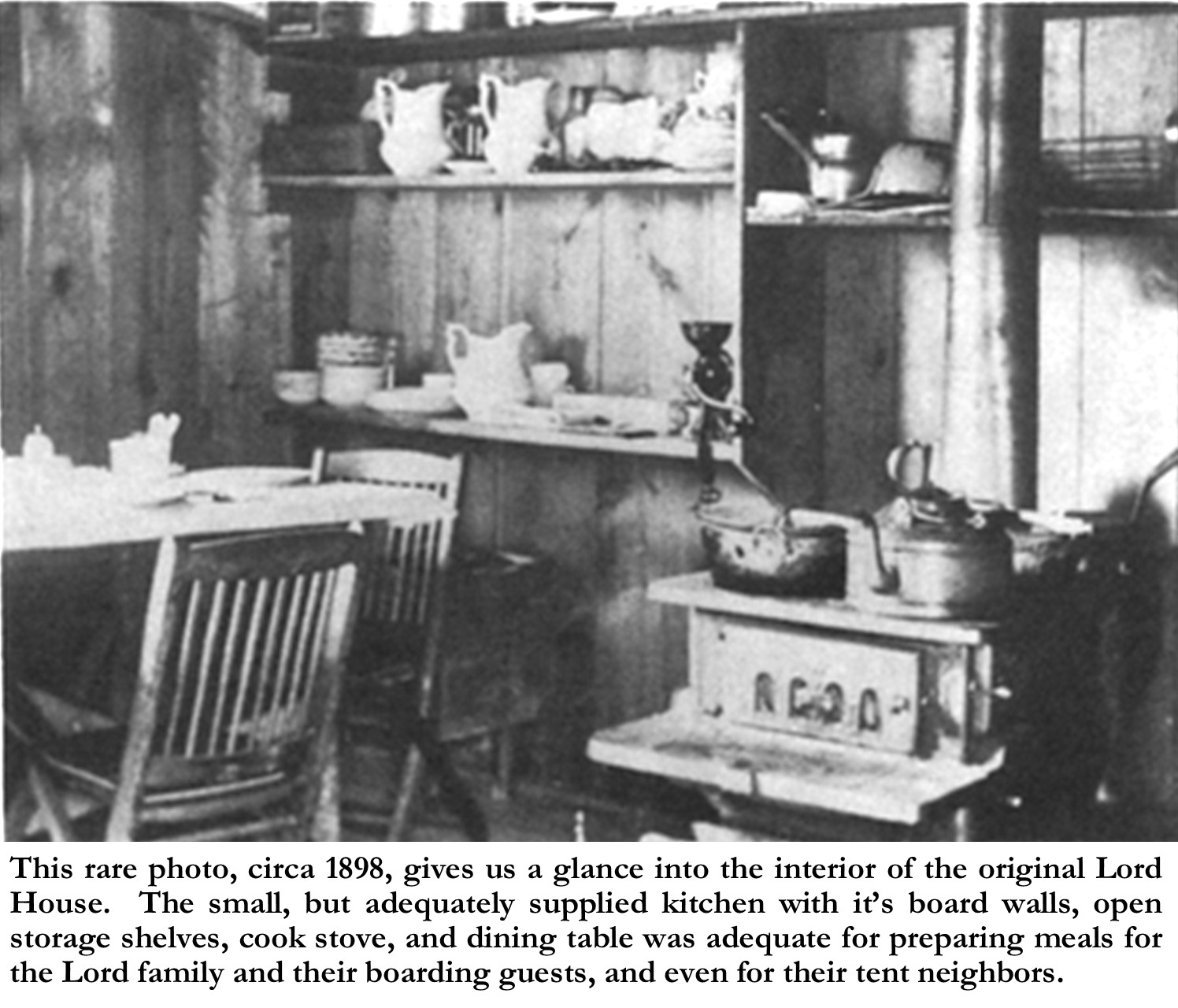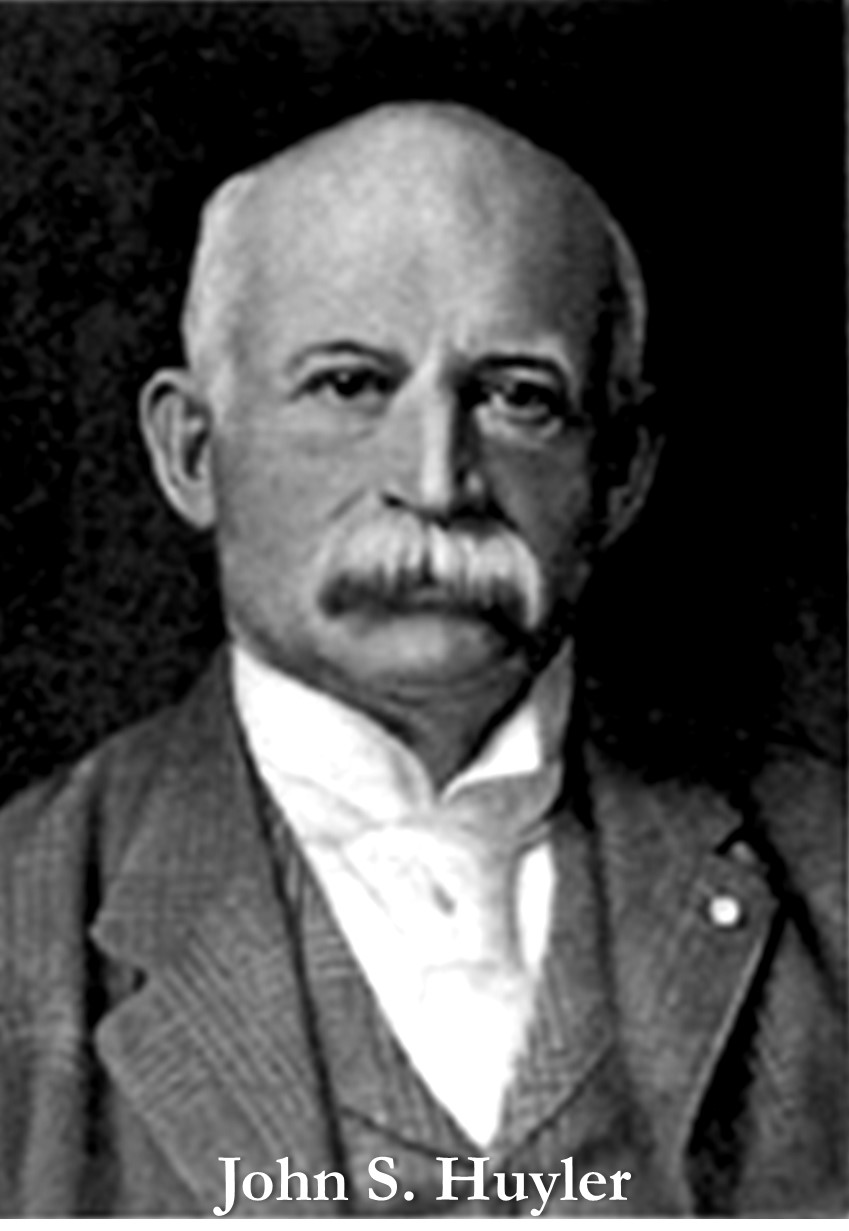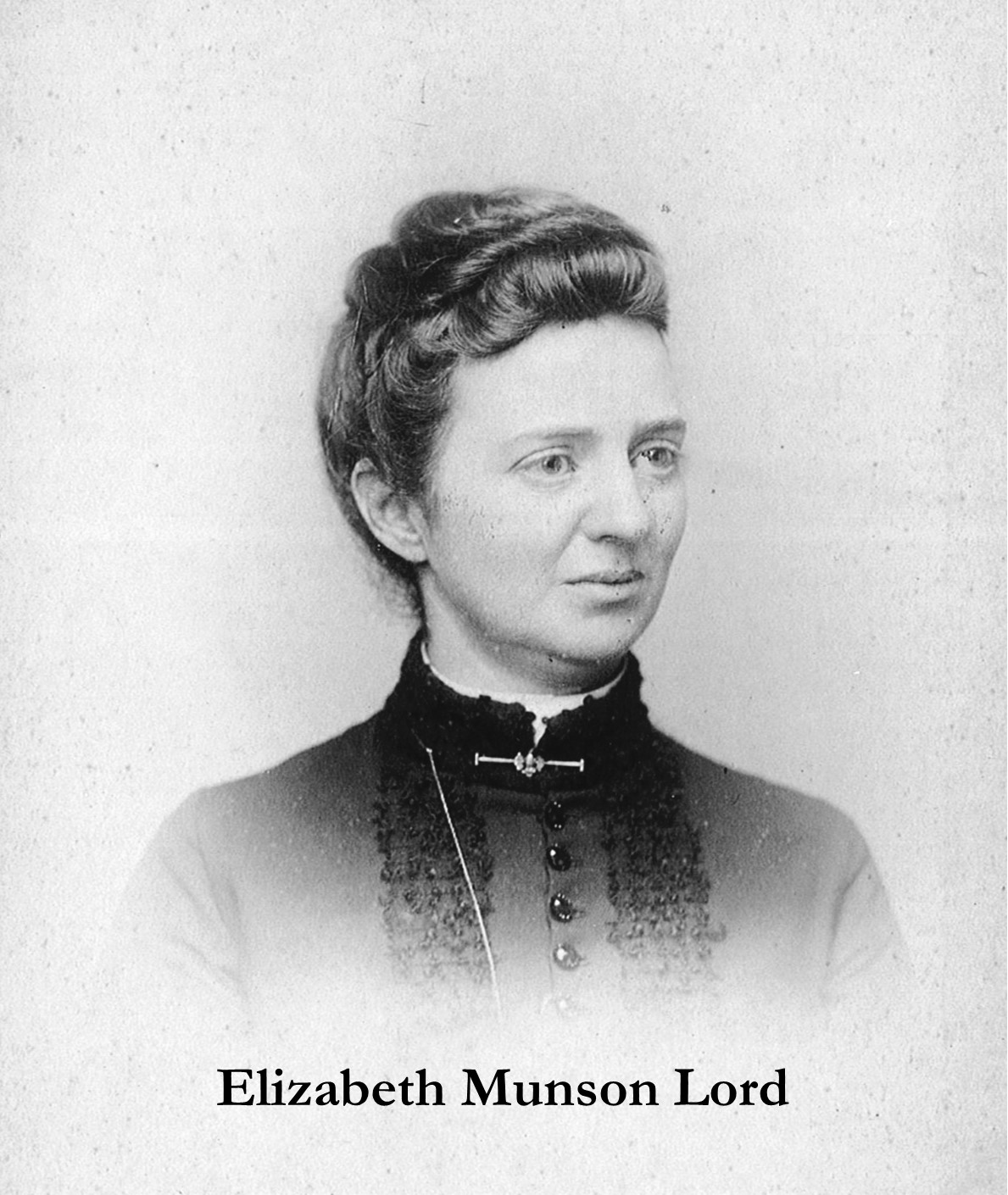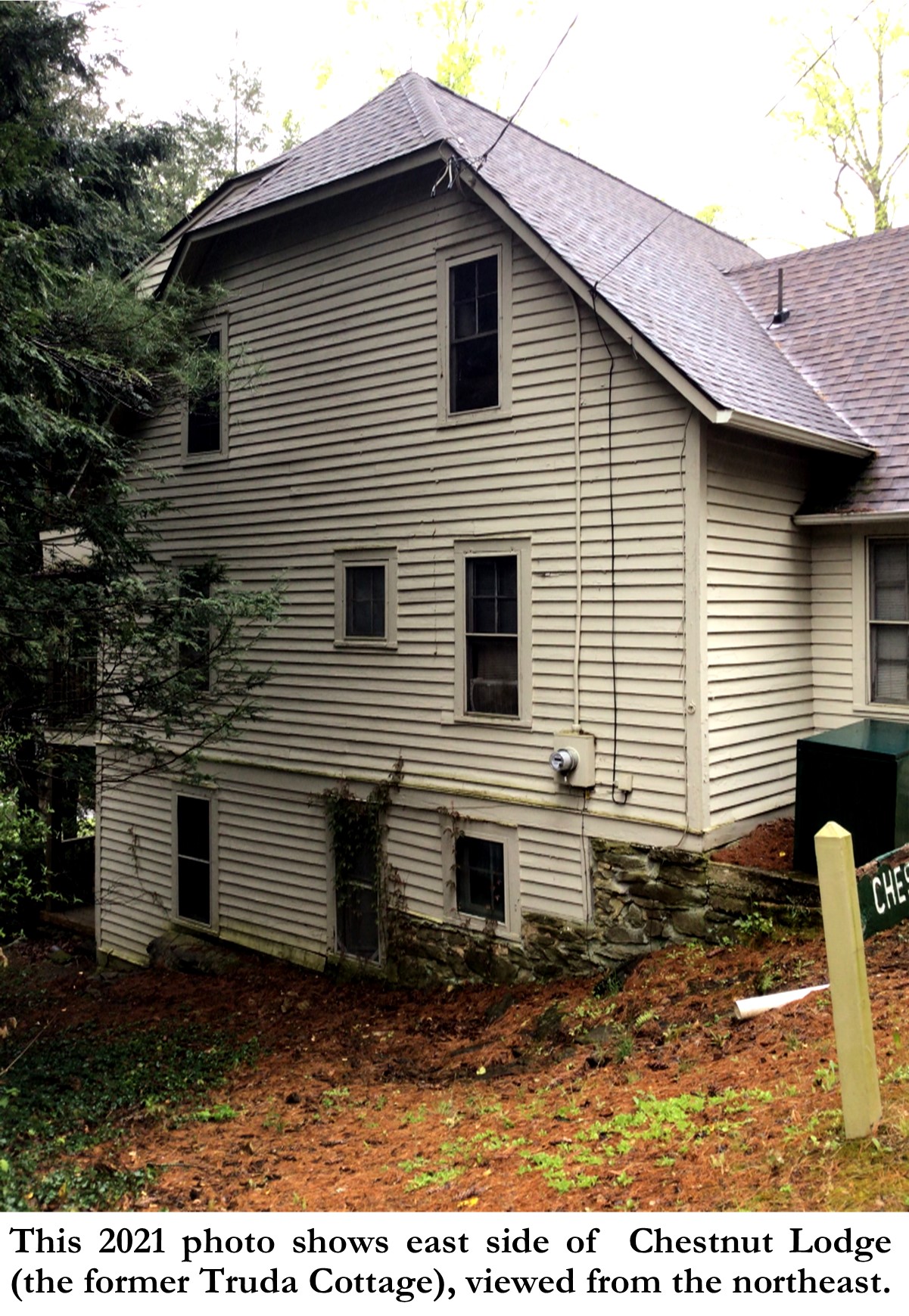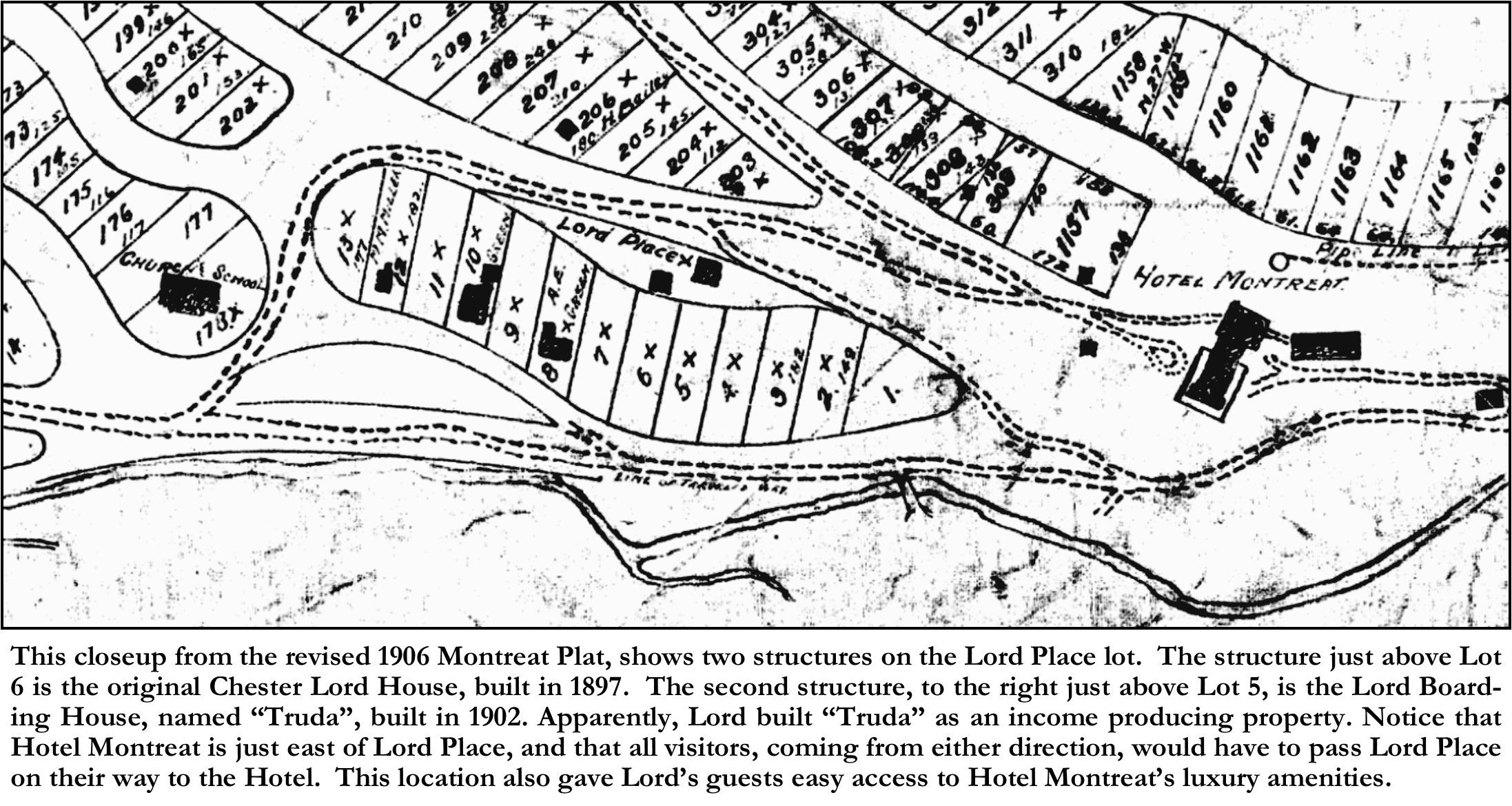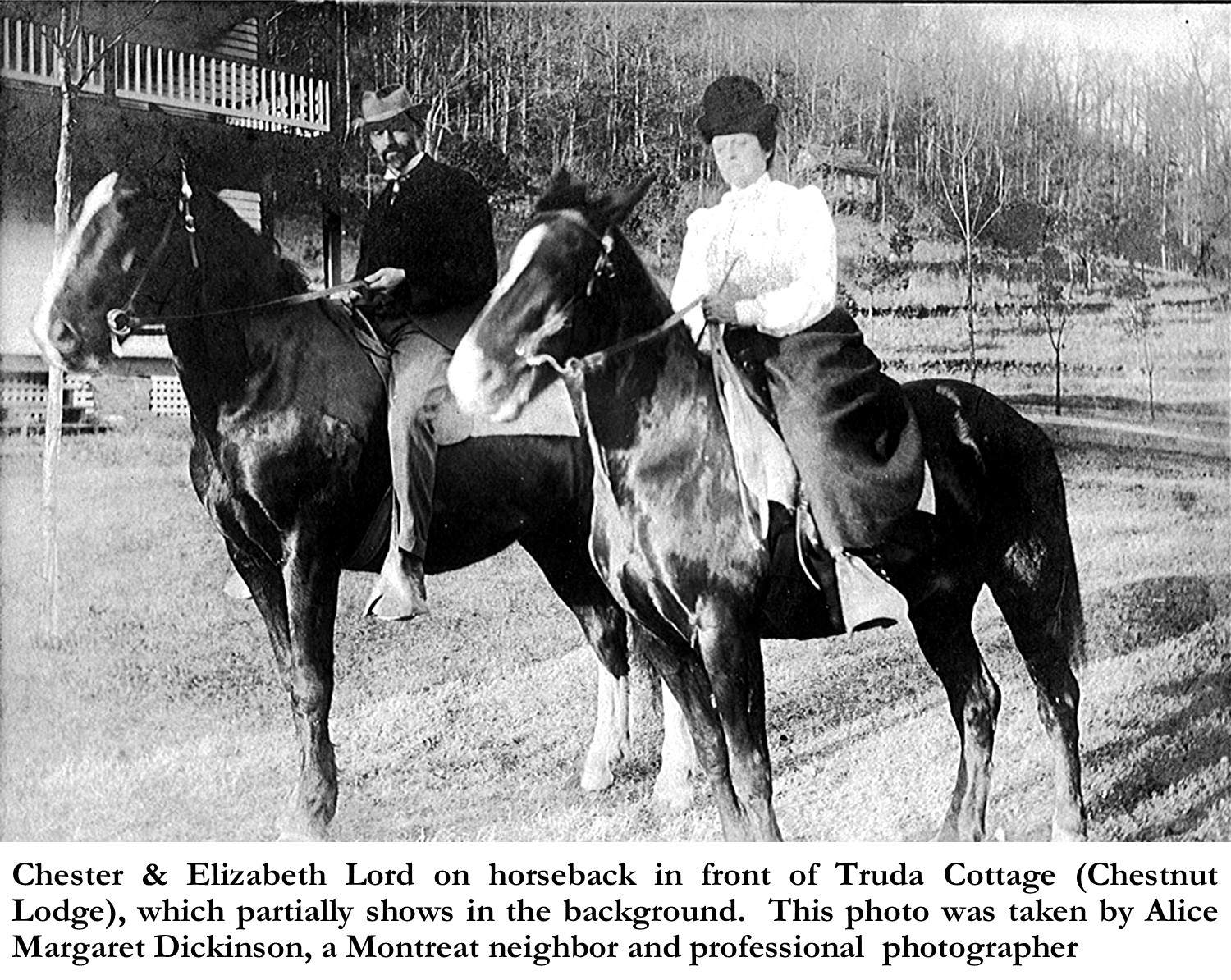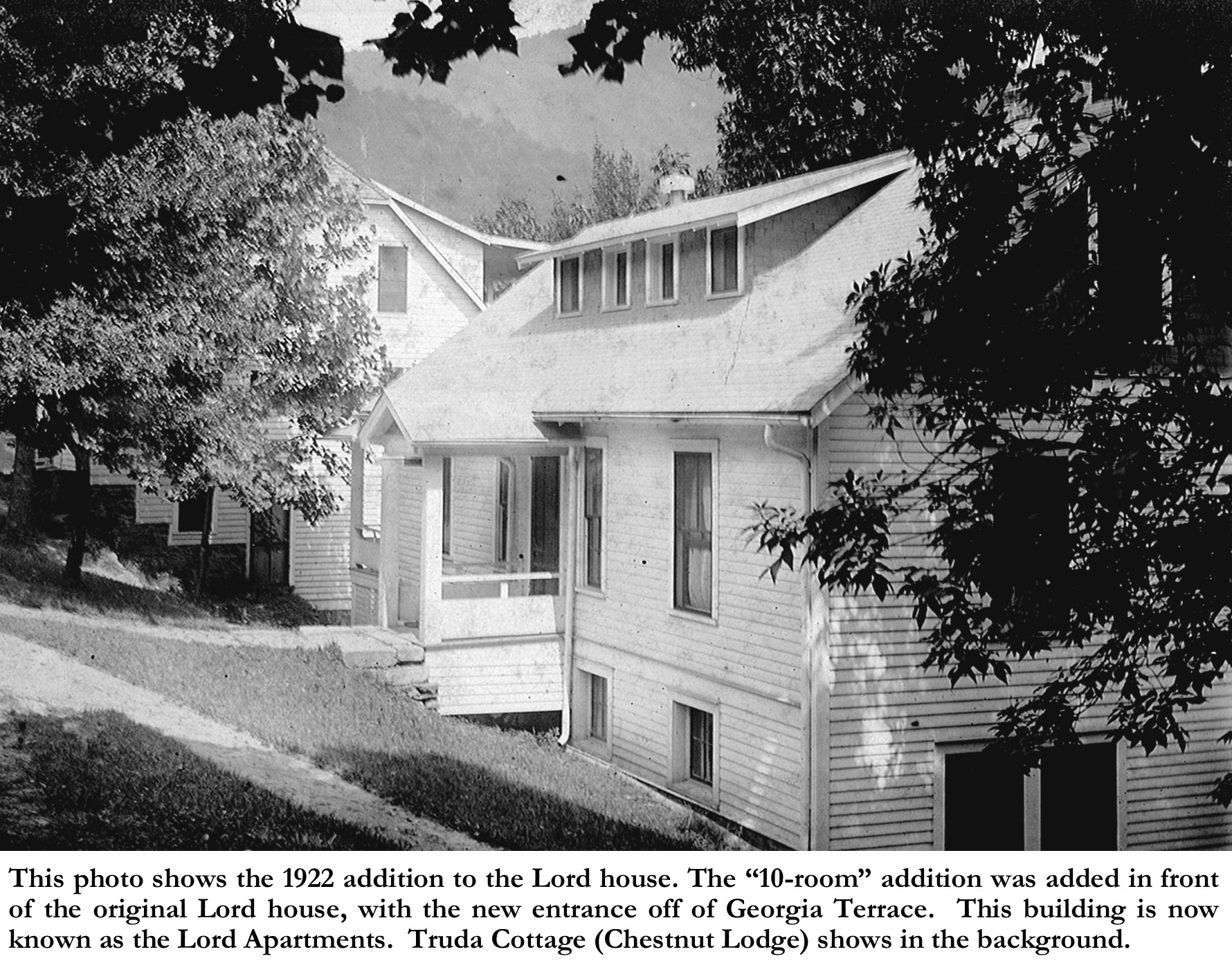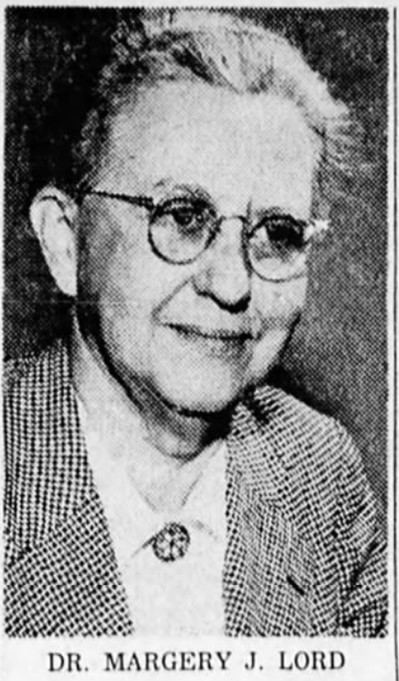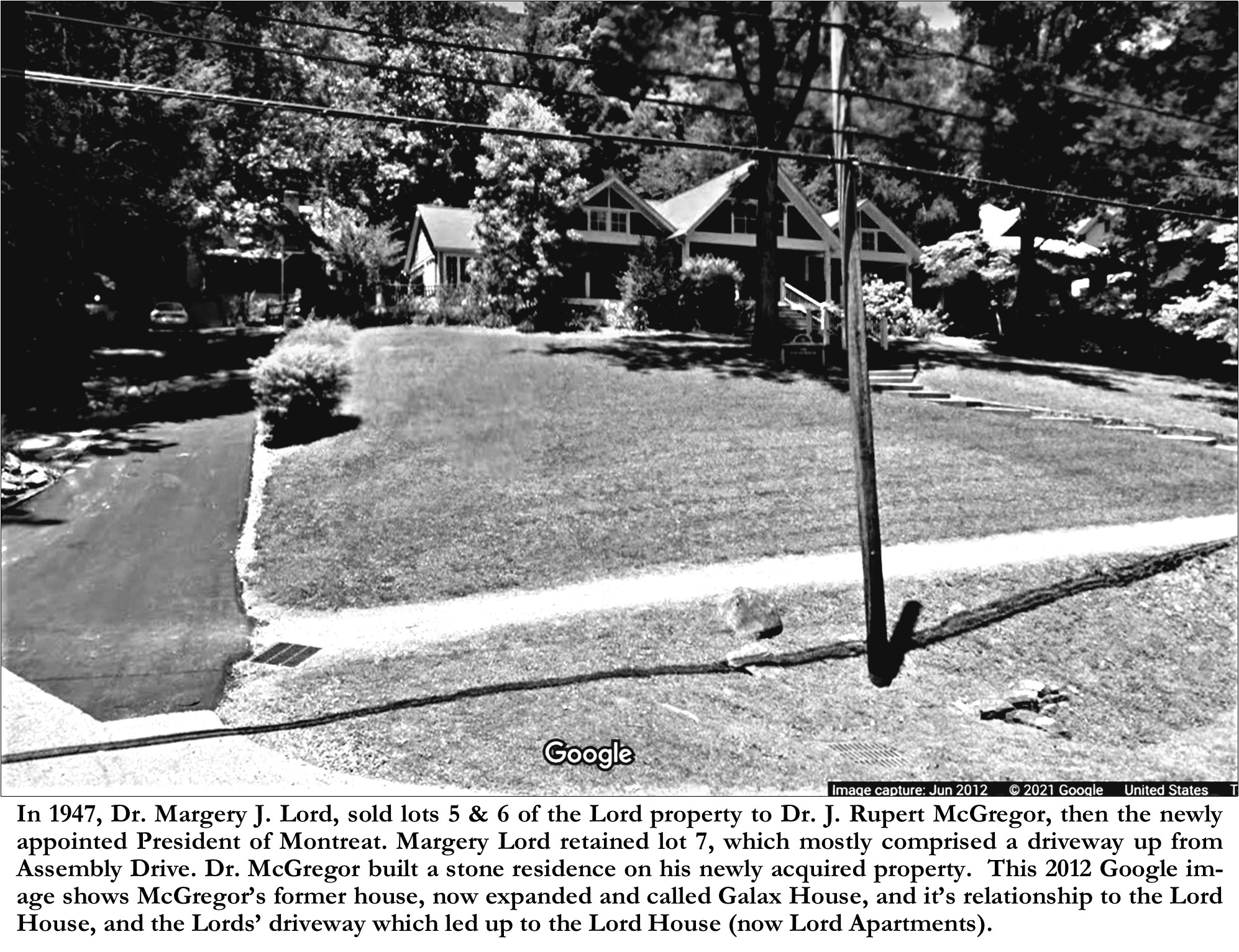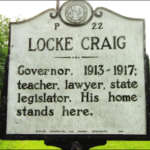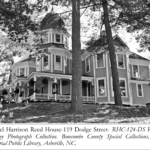by Dale Wayne Slusser
Once described as a “pretty little religious village”[1], the Town of Montreat, which is nestled in a deep cove near Black Mountain in Western North Carolina, has a rich and prolific assemblage of historic cabins, cottages, and residences. One of the first and oldest of these is the Lord Apartment House, built by Montreat’s first permanent resident, Chester Case Lord. Both Lord Apartments and its neighbor, Chestnut Lodge (also built by Chester Lord) represent the “embryo of the larger community”[2] of today’s town of Montreat, with its highly valued picturesque and historic residences, which are artfully sited along Montreat’s intertwining streets which wind up the sides of the mountains from the valley floor.
“Rev. John C. Collins of New Haven, Ct, secretary of the International Christian Workers’ association, and J. R. Tucker, esq. left this afternoon for Raleigh, where they hope to secure the passage by the legislature of a bill chartering “The Mountain Retreat association”, an organization that means much for Western North Carolina, and for Buncombe county in particular,” reported the Asheville Citizen Times on February 22, 1897.[3] The article further reported that the incorporators have through local agent, John Alexander Porter, secured 5,000 acres and that “the idea is to plot out a small section of land purchased, under the direction of a landscape gardener of natural repute, making at first perhaps 800 lots varying in the size from one quarter acre to one acre.”[4] The list of the “incorporators” along with Rev. Collins, included many prominent (mostly northern) religious and business leaders including: W. H. Wanamaker (of the famed Philadelphia Wanamaker family), David A. Reed, C. N. Crittenton, John S. Huyler (a candy-making mogul), Floyd W. Tomkins, Jr., David Gregg, H. H. Kelsey, Weston R. Gales, S. L. Blake, J. A. Porter (local Buncombe agent), C. A. Rowland, Jr., A. C. Dixon, C. P. Masden, John Y. McDermott, T. B. Wilson, and “their associates”[5].
Just a few weeks later, on March 2, 1897, the North Carolina General Assembly officially ratified “an Act incorporating the Mountain Retreat Association”, with the stated purpose “to establish and maintain in the mountain section of North Carolina a municipality containing assembly grounds for the encouragement of Christian work and living through Christian conventions, public worship, missionary work, schools, libraries, orphan houses, manual and trade training and other operations.”[6] And in addition to promoting “the encouragement of Christian work”, the stated purpose of the association was also to establish “a community and health resort, with places for dwelling, both permanently or temporarily, for health, rest, recreation, Christian work and fellowship, together with whatever may be connected therewith…”.[7] As mentioned in the February newspaper article, in order to adequately and appropriately design their site to provide for their multiple purposes, and to layout the lots for their “community and health resort”, the association hired a noted “landscape gardener of national repute”.
The “landscape gardener of national repute”, hired by the Mountain Retreat Association, was Donald G. Mitchell, a popular author and landscape designer of the time. “Donald Grant Mitchell (1822-1908) was born in Norwich, Connecticut and graduated from Yale College in 1841. After serving abroad briefly as U.S. consul in Venice, Italy, from 1853 to 1854, in 1855 Mitchell settled in New Haven, Connecticut, purchasing a large farm which he named Edgewood. Under his pen name of Ik (or Ike) Marvel, Mitchell wrote literary criticism, travel literature, and volumes of essays on rural themes about farming, home construction, and town planning in a series of books, using Edgewood as a model. Through his writings, Mitchell became popular as a noted agriculturalist, landscape gardener, and man of letters. He was not only “an acquaintance of Andrew Jackson Downing and shared many of Downing’s philosophies of design”, but in the opinion of one modern author, “His writings on the subject are considered only secondary to Downing’s and are less technical and more literary.”[8] To the late-Victorians, Donald G. Mitchell was the equivalent of our modern HGTV pop star designers, who represent both professional and popular design to the general public.
In July of 1897, work on the new “religious community”, to be called “Montreat”, began in earnest. Rev. Collins, arrived in Black Mountain, accompanied by his son Roger, and F. S. Odell, a civil engineer and surveyor (and also one of the Association directors) from Mt. Vernon, New York.[9] The small party headed three miles northeast from the station at Black Mountain to the site of proposed community. They had brought along their own “camp equipage” and “by nightfall, they had erected their quarters in Puncheon Camp cove, and turned in for repose under blankets on a couch of balsams.”[10] The following day, work began on clearing the grounds in preparation for the Associations first gathering, scheduled to begin on July 29, and run for ten days. Mr. Collins had brought along 40 tents for the attendees to use and, he also supervised the building of brush arbor Adirondack shelters for those who desired alternate accommodations. In addition to the pre-gathering preparations, civil engineer, F. S. Odell began the arduous task of surveying the property and laying out the lots for the residential section of the new community. Although it was reported earlier that the work of laying out the grounds was being done “under the supervision of Donald G. Mitchell (“IK” Marvel)”,[11] I am not sure if he was one of the July 1897 entourage or not. As Mitchell was then 75 years old, and as his expertise was in landscape design and gardening, the project required the services of a civil engineer and surveyor, like Frederick S. Odell, to do the necessary surveying, laying out of the roads, staking out the lots, and eventually to prepare the official plat to be registered with the deeds register. However, I suspect it’s also possible that Mitchell may have decided not to take the commission, as a newspaper reporter who was onsite in August of 1897, interviewing Rev. Collins, quoted Rev. Collins, just after Rev. Collins “administered a beneficial whack at the last slat as he tearfully repressed an emotional ejaculation as the hammer landed unexpectedly upon his thumbnail instead of the wire-drawn article”, the following quote: “We have secured the services of Mr. F. S. Odell, of Mt. Vernon, N. Y., a well-known landscape designer, who has been associated with Frederick Law Olmstead, who laid out the Baltimore (sic) grounds, the World’s Fair grounds, and most of the most celebrated parks and private estates in this country. We hope eventually to secure the services of Mr. Olmsted as consulting landscape gardener.” [12] I doubt that Olmsted became involved, and also from this point on there was no further mention of Donald Mitchell.
Word of the progress of the Mountain Retreat Association was widely publicized and marketed across the East Coast. One of those who was attracted to the new community, was Chester C. Lord, a resident of New Haven, CT, the hometown of Rev. Collins and other MRA directors. Chester Case Lord was born on September 9, 1857, in Killingworth, Connecticut to Benjamin & Antoinette Goodrich (Case) Lord. As an adult, he first “followed the farming occupation for some years with Elizur P. Atwater of Cheshire, CT.”[13] In 1882, at the age of 24, Lord married Elizur Atwater’s daughter, Juline T. Atwater. Around 1889, Chester was hired on as a foreman with Sargent Manufacturing, a manufacturer of hardware. He was working at Sargent, when “persistent infirmities of health compelled him to seek a change of climate.”[14] In 1897, Chester Lord decided to seek the rest and respite offered by the Mountain Retreat Association. In October, Lord left New Haven and traveled South to “make preparations about moving his family”[15] to Montreat by the winter.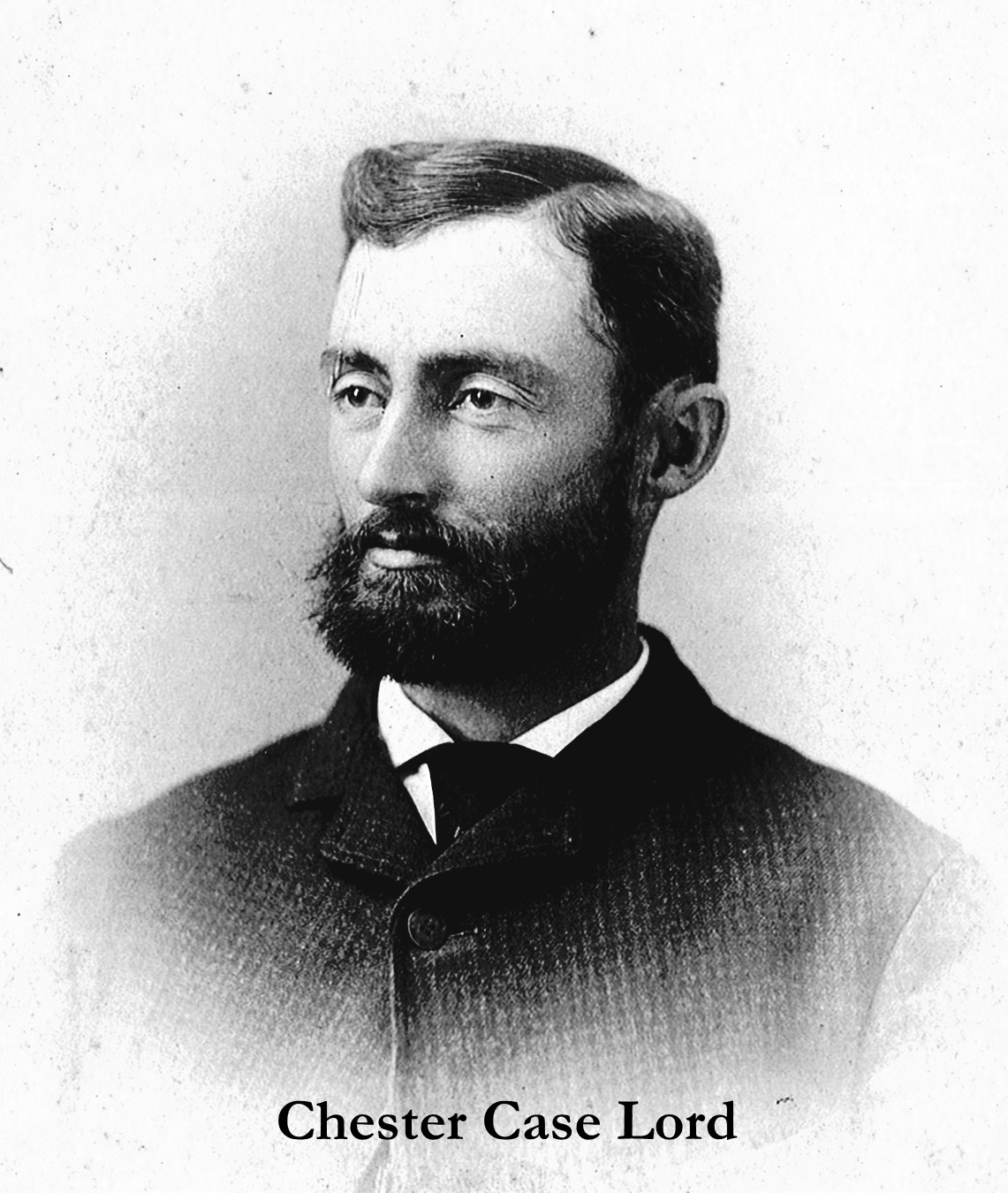
Chester Lord had chosen a lot on the north side of what would become Assembly Drive, just west of the large clearing which was being developed as the Assembly Grounds. Lord had chosen a site so early during the planning of the village, that Lord’s house, labeled as “Lord Place”, is the only house shown on Odell’s final plat, completed in 1898. And even more interesting is that it shows on an unnumbered lot, indicating that it was there before the official division and numeration of the lots were determined. Near the top of his sloped lot, Lord first erected a small shack (at least so the story goes) to occupy while a permanent residence was being constructed. Engineer, Fred Odell, while onsite, lived in a tent near Lord’s small shack. Apparently, Lord served as the camp cook for the small family of settlers, as his shack included a cook stove.
On his chosen lot, Chester Lord constructed a two-story frame house, 18 feet wide by 24 feet long, topped by a truncated (clipped) gabled roof. The house was oriented north/south and built into the hillside, with an almost at grade entrance on the north end, and a raised basement and wood deck on the south end. The raised southern deck was connected to the front by a wide wood deck/walkway along the west side of the house at the first-floor level (this deck and walkway show on the 1898 plat). White painted clapboards with dark trim were used for the exterior cladding. The house was no doubt finished by the end of the winter, as it was reported in the February 12, 1898 edition of the New Haven, CT Morning-Journal, that “over 200 lots have been sold and a number of cottages erected,” and that “C. C. Lord of this city has one of the houses.”[16] Although each owner would legally own their house or cottage, they did not own the lot, but instead all lots were leased on a 99 year lease. This was an early method of zoning to ensure that the homogeneous character of the village was maintained, and possibly a means to keep developers from buying blocks of lots for investment purposes only.
Shortly after completing the construction, Chester Lord, moved his wife Juline and their children, Robert, and Margery, from New Haven down to North Carolina and into their new home. Although built as family home, the new house also functioned as boarding house, no doubt ipso facto, it being the only habitable home in the village. Soon others would be joining the growing community, needing a temporary place to stay while their cottages were being built. In 1898, just after Lord had completed his house, Mary Martin, who had been sent south by her family for rest and restoration, visited the growing village. Reading the Montreat circular sent to her by Rev. Collins, Mary was expecting to see a “large population” in the village, but she was surprised to find only a handful of residents, all of which she could easily enumerate: “…at present this is a complete list of the inhabitants and their dwelling places,” writes Mary Martin in an undated letter sent home from Asheville: “Mr. Odell, a tent. Mr. Norris (about 19, just ready for Yale, here for his health), a smaller tent. Mr. & Mrs. Lord, Robert & Margery (all here for Mr. Lord’s health), the first floor of a nice frame house. Miss Kent & Miss Stone (former missionaries in Japan, here for Miss Stone’s health) one room in the second story of Mr. Lord’s house. Myself, in another room of the second story of Mr. Lord’s house. The Dickinson family, three women, one man, a little log cabin.”[17] Martin goes on to describe the interior of her room, which gives us an unexpected brief insight into the interior finishes and furnishings of Lord’s original house. Describing her room, she recounts: “It is lined with wood and contains a comfortable double bed and a cot—also convenient shelves, etc. with bright curtains.”.[18]
Another rare photo, circa 1898, also gives us a glance into the interior of the original Lord House. The small, but adequately supplied kitchen with its board-covered walls (as described by Mary Martin) open storage shelves, cook stove, and dining table was adequate for preparing meals for the Lord family and their boarding guests, and even for their tent neighbors.
The physical work needed to pioneer in the new community and healthful climate of the North Carolina mountains proved beneficial to Lord, as his health began to quickly improve. By the Spring of 1898, Lord’s hometown doctor, Dr. Willis G. Alling, who came to visit Montreat, reported back to their mutual New Haven friends, that Chester Lord “who had left New Haven in poor health last Fall” was not only of “improved health”, but that he “has gained twenty pounds in weight since going to North Carolina.”[19]
By 1899, under the direction of Rev. John C. Collins, the small religious community of Montreat had continued to grow. It was reported that within the previous six months, twenty new cottages had been built, and the population had grown to sixty residents, and that the village now included “a post office, school, circulating library, stores, temporary bank, a union church, Sunday School, and mid-week services.”[20] Of course the village population would swell during the summer conferences that continued to be held on the grounds. The conferees would stay in their own cottages, or stay in the makeshift hotel, called Old Piney Inn, or else board with the permanent residents, like Chester Lord. But even as the conferences were being conducted, work on the development of the village and grounds continued throughout the summer of 1899. In August of 1899, it was reported that the proposed three-acre lake (now called Lake Susan) was being laid out, and that “the association was spending considerable money on the streets of this settlement, building bridges and cutting down grades.”[21] In October, Rev. Weston R. Gales was elected manager of the Mountain Retreat Association, to succeed Rev. Collins, who still retained his position as president of the association. In November of 1899, as Montreat continued to grow, Rev. Collins decided that the duties of the general management of the village were becoming “too onerous to devolve upon one man”, so he resigned his presidency in order “to give his time to detail matters of the association, such as locating industries, sales of lots, etc.”[22] Collins turned over the presidency of the Mountain Retreat Association to John S. Huyler, although Collins continued to serve on the MRA board of directors. John S. Huyler, a “millionaire candy maker”[23] and member of the original MRA board of directors, was elected as the new President of the Mountain Retreat Association.
Although 1899 was a banner year for the growth and development of Montreat, a series of sadness was about to strike the Lord family. First, in November of 1899, Lord’s mother-in-law, Julia Augusta Atwater, who had come to winter with the Lords at Montreat, succumbed to pneumonia, dying in the Lord house on November 25th.[24] But then, even more tragic, less than one year later, on September 23, 1900, Chester’s wife, Juline Atwater Lord, suddenly passed away at the age of 48, leaving her husband, a 12 year-old son Robert, and 8 year-old daughter Margery.[25] Although the children were denied the maternal presence of their mother, probate records[26] show that financially, the children were well provided for through inherited interest in numerous stocks and bonds, and income from real estate that Juline had owned in Cheshire, CT. This inheritance eventually paid for the education of their daughter Margery towards her medical degree, which resulted in her becoming a noted practicing physician.
Chester Lord’s grief did not last long, or else his need to find a mother for his two small children overcame his grief, but suffice it to say that a year after the death of his first wife, Chester Lord married Elizabeth Julia Munson.[27] The couple was married on October 11, 1901 in New Haven, CT, the hometown of the Lords and Atwaters. In fact, I believe that Lord had known Elizabeth for many years, as she was the first cousin of Lord’s first wife, Juline. Elizabeth’s mother was Mary Louisa Atwater Munson, the sister of Juline’s father Elizur Penderson Atwater, and both wives had the same grandfather, Medad Atwater.[28] Shortly after their marriage, Chester and Elizabeth returned to Montreat.
As part of the new MRA President John Huyler’s efforts to improve Montreat, in 1900, he commissioned Asheville architect, Richard Sharp Smith to design a new three-story hotel, complete with parlors, kitchen, dining room, and guest rooms. At his own expense, Huyler began construction of “Hotel Montreat” on the hill on the north side of the assembly grounds, next to the old makeshift Old Piney “hotel”. The new hotel, first opened for visitors in the summer of 1901, under the management of W. D. Paxton. Hotel Montreat was oriented north-south, with its entrance court and porch facing west, looking over to Lord Place, which sat just to the east of the new hotel.
Chester Lord’s role in the development of Montreat extended beyond his own interests and personal affairs. In August of 1901, just prior to his re-marriage, Lord was elected to be the Secretary/Recorder of the Mountain Retreat Association management committee.[29] Lord would continue to serve on the managing committee for many years, serving in various positions. In 1904, in addition to his duties as secretary/recorder, Chester Lord was elected to also serve as general manager.[30] As Chester Lord became more active in the management of Montreat, and as the small village continued to grow with more people being attracted to its healthful benefits, it must have become evident to Lord that there was a greater need for more accommodations, even despite the opening of Hotel Montreat. Decades before “tourism” was identified as a viable economic development tool, Lord ascertained that tourism could be a viable option for generating personal income while still contributing to and serving the interests of the association and the community. To that end, in the Spring of 1902, Chester Lord began construction of a two-story frame boarding house, in preparation for the expected swell of summer visitors. The house was reported to be completed and ready for occupation by July 1st.[31] The new boarding house, named “Truda”, was built on the Lord Place property just northeast of the Lord House. An attractive feature of the new house was the two-story south-facing porch decks, which provided outdoor leisure space for its occupants. This house, which remains, is now known as “Chestnut Lodge”.
A revised 1906 plat of the Montreat property clearly shows the location of the new boarding house and its relationship to the original Lord house. The 1906 Plat also shows the location of Truda cottage in relationship to the new Hotel Montreat. I suspect that Truda’s location close to the assembly grounds, and close to the dining room of Hotel Montreat, was an incentive for those visiting Montreat, who wanted the cottage experience but also desired the amenities of the hotel. In fact, not only did the triple west-facing hotel dining room windows look directly over to Truda cottage, but more importantly, the plat shows that anyone approaching the front of Hotel Montreat, whose entrance faced west, would have to pass by Truda cottage.
One of the few newspaper references to Truda cottage that I’ve found is from 1908, where the Asheville Weekly Citizen, in an article titled “Montreat Season Is On In Earnest” reported that “Rev. R. P. Smith and Mrs. A. B. Fortune of Asheville, Mrs. Bly of Florida, with their families, are in occupancy of C. C. Lord’s Truda cottage.” [32] Another interesting article which mentions Truda cottage is from 1921: “Misses Dickinson have moved from the Truda, and will occupy the Mattison cottage for the winter. Miss Helen is teaching English at the Montreat Normal School [predecessor to Montreat College], and Miss Margaret will continue her photographic and artwork.”[33] I wonder if the “Misses Dickinson” may have been part of the “Dickinson family” occupying the log cabin in 1898, as mentioned in Mary Martin’s letter. Miss Helen Dickinson, and her sister Margaret Dickinson, had purchased lot #91 in 1907 and built a cottage. Their cottage remains at 111 Virginia Road in Montreat and is now named “Hearth Haven”. Why were they staying at Truda cottage instead of their cottage? Perhaps their cottage was not winterized, and only comfortable in the summer.
In an early photo by Alice Margaret Dickinson who, as the article mentioned, was a professional photographer and early permanent Montreat resident, we see Chester Lord and his second wife, Elizabeth Munson Lord mounted on horses in front of the “Truda” cottage. A portion of the two-story porch decks on the south face of Truda, show behind the Lords.
Chester Lord, in addition to his duties as the association secretary/recorder, general manager, and proprietor of his own boarding house, he also began a real estate investment business. Over the ensuing two decades, Lord purchased and resold numerous additional lots and properties. Often, he would purchase an unimproved lot and improve it, and resell it for a decent profit. One early example, is the property, known as “Bonnie Brae”, at 233 Assembly Drive. Shortly after completion of Truda cottage, in 1905, Lord purchased the lease for Lot 18 from Hattie Rockwell[34], who had purchased the lot in 1898, but had not improved it. After investing $500 to erect a dwelling on the lot, Lord sold the property in 1906, for $900 to William T. Waller.[35]
A small group of believers met in Lord’s house in 1906, to organize Montreat Presbyterian Church. In 1914, Chester Lord began serving as a church elder. He served in that capacity for decades. Two years later, in 1908, Chester Lord, in addition to his real estate investment activity and managing his boarding house, built a new grocery/general store next to the Montreat Post Office building. Lord owned and operated the general merchandise store until 1914, at which time the Mountain Retreat Association purchased the store.
At the start of 1922, Chester Lord began a major renovation of his Lord Place cottage. In March of 1922, it was reported that Lord had “just completed what is virtually a new home, adding 10 rooms to his former residence” as well as renovating the home “in many particulars”.[36] The 10-room addition was added on to the north end of house facing Georgia Terrace.
In June of 1922, just as Chester Lord, was approaching retirement age, he was selected from a list of candidates and appointed to the position of US postmaster for Montreat, North Carolina. Sadly, just a few months after his appointment as postmaster, on October 8, 1922, Lord’s wife, Elizabeth passed away at the age of 60, after battling breast cancer.[37] A service was held at Montreat the following day, and then her body was sent to Cheshire, Connecticut where she was laid to rest in Hillside Cemetery next to her cousin, Chester’s first wife, Julie Atwater Lord.
As a widower, Lord continued to serve as Montreat’s postmaster until retiring in 1932, at the age of 75. In 1926, Lord acquired stock in the reorganized Black Mountain Lumber Company. Next to the company’s founder, C. C. Dougherty, who held 56 shares, C. C. Lord acquired the second highest share of the company at 55 shares.[38] That same year, 1926, Chester Lord also joined C. C. Dougherty, along with F. B. Dennis, in establishing the Spruce Pine Lumber Company “to deal in lumber and building material.”[39]
During his “retirement years”, Chester continued to occupy his home on Lord Place, sharing it with his adult daughter, Dr. Margery J. Lord who by then was practicing as a local physician. C. C. Lord also continued to be active in the summer conferences, and activity of the Association. He became known for “his hearty handshake” and “his cheery smile of welcome”[40] both to old friends and new visitors to the Assembly grounds. He also continued to serve as an elder at Montreat Presbyterian Church, often representing the church at the annual General Assembly meetings, as well at local Presbytery meetings. Chester Case Lord, the first permanent resident of Montreat and elder statesman of the village of Montreat, died on May 8, 1942 at 86 years of age. Lord willed his property to his daughter Dr. Margery Lord. The property included Lord Place, with the Lord residence and Truda cottage, as well as lots nos. 5, 6, & 7, which comprised the Lords’ “front yard” down to Assembly Drive.
Following Chester Lord’s passing, Margery Lord continued to occupy the Lord house, mostly as a second home. Beginning in 1926, when Dr. Lord was hired as a physician for the Asheville City schools, she maintained both her medical practice and a residence in both Asheville and Montreat. In 1939, Dr. Margery Lord was appointed the Director of the Asheville City Health Department, a position she would hold for decades. In a 1954 newspaper column titled, “Know Your Officials”, reporter Doug Reed, interviewed Dr. Lord, who was still serving as the Asheville City Health Officer. Reed reported that Dr. Lord lived on St. Dunstan’s circle during her “off Hours”, where “she enjoys gardening and her sizeable collection of records”, but that she also “sometimes gets a brief respite in Montreat in the house that her father built. There she has a vegetable and flower garden too.”[41]
In May of 1947, Margery Lord sold lots 5 & 6 (mostly, reserving a portion of lot 6 on the western lot line, where the Lord driveway came up from Assembly Drive) to Rev. Dr. J. Rupert McGregor. In December of 1946, McGregor had been appointed as the new President of the Mountain Retreat Association and Montreat College. McGregor immediately began construction of a new residence on the lots, in preparation of assuming his new position on June 1st. Dr. McGregor only owned his new residence for less than five years, before selling it in 1951 to the Brinkerhoff family. Dr. McGregor then moved to a new house that he had built further west on Assembly Drive. The Brinkerhoff family owned the stone cottage for over fifty years, before selling it to the MRA in 2002. The lovely cottage, now known as Galax House, has since been renovated and turned into a luxury guesthouse/lodge.
In 1963, Dr. Margery Lord sold Lord Place (including Lord House and Truda Cottage) and the accompanying Lot 7 to Helen Miles.[42] Helen Miles, a teacher at Montreat Normal School (Montreat College) since the late 1920’s, had moved in as a boarder with Margery and her father Chester around 1932. Miss Helen Miles owned the property for the ensuing two decades, until selling the property to the Mountain Retreat Association in 1982.[43] The Association now operates the Lord House as “Lord Apartments”, and the former Truda Cottage is now called “Chestnut Lodge” and is used for retreat lodging.
The Lord House (Lord Apartments) and Truda Cottage (Chestnut Lodge) remain today, not just as a legacy from Chester Lord, but as a remainder of, and as visual evidence of, the beginnings of the Mountain Retreat Association and the early development of the “pretty little religious village” of Montreat, North Carolina.
Photo Credits:
“Modeled After Ocean Grove” article– Modeled After Ocean Grove, Plans of the Mountain Retreat Association”, Asheville Citizen Times, Asheville, NC -February 22, 1897, page 4. Newspapers.com
Donald Grant Mitchell photo– Unidentified photographer – https://www.flickr.com/photos/smithsonian/2547351629/-Portrait of Mitchell. Identification on front (handwritten): Donald G. Mitchell in 1883.
Fred Odell & family outside Tent– Presbyterian Heritage Center at Montreat, PO Box 207, Montreat, NC 28757. Caption by Dale Slusser.
Chester Case Lord portrait— Presbyterian Heritage Center at Montreat, PO Box 207, Montreat, NC 28757. Labeled by Dale Slusser.
1898 Montreat Plat– photographed by Nancy Thomas Wofford from: Mother Pioneered At Montreat (Her Letters 1898-1899). Adaptation by Emilie Miller Vaughan; William Heidy, Jr. Editorial Assistant. (Originally published by Emilie Miller Vaughan, of Ithaca, NY, 1972) (This info. from a facsimile reprint by a bequest of Eugenie W. Love Estate, published by Presbyterian Church (U.S.A.)- Department of History and Records Management Services, 1996). Cropped and captioned by Dale Slusser.
Lord House, south-end, 1898 photo– Presbyterian Heritage Center at Montreat, PO Box 207, Montreat, NC 28757. Caption by Dale Slusser.
Lord House, south-end, 2021 photo- photographed by Nancy Thomas Wofford of Greenville, SC & Montreat, NC. Caption by Dale Slusser.
Lord House, north-end, 1898 photo– Presbyterian Heritage Center at Montreat, PO Box 207, Montreat, NC 28757. Caption by Dale Slusser.
Lord House, kitchen, 1898 photo– Presbyterian Heritage Center at Montreat, PO Box 207, Montreat, NC 28757. Caption by Dale Slusser.
John S. Huyler portrait– Presbyterian Heritage Center at Montreat, PO Box 207, Montreat, NC 28757. Labeled by Dale Slusser.
Elizabeth Munson Lord– Presbyterian Heritage Center at Montreat, PO Box 207, Montreat, NC 28757. Labeled by Dale Slusser.
“A Section of Montreat from the Alba”– -photo from: Montreat- by Mary McPhail Standaert & Joseph Standaert, Arcadia Publishing, April 20, 2009, pages 40-41. Labeled and captioned by Dale Slusser.
Chestnut Lodge, 2021 photo- photographed by Nancy Thomas Wofford of Greenville, SC & Montreat, NC. Caption by Dale Slusser.
Hotel Montreat postcard– “The Hotel at Montreat” original photo by Herbert Pelton, 1909. Image C113-5, Buncombe County Special Collections, Pack Memorial Library, Asheville, NC. Caption by Dale Slusser.
“Hotel Montreat” First floor Plan-R. S. Smith drawing– Image RS1039.3-Asheville Art Museum – Richard Sharp Smith Collection, Buncombe County Special Collections, Pack Memorial Library, Asheville, NC. The Richard Sharp Smith Architectural Drawing Collection is owned by and housed at the Asheville Art Museum and was a gift of the Historic Resources Commission of Asheville and Buncombe County. Caption by Dale Slusser.
1906 Montreat Plat– 01/01/1906- Plat of Montreat, Black Mountain Twp., Deed book 154, page 1. -Buncombe County Register of Deeds. Caption by Dale Slusser.
Chester & Elizabeth Munson on Horseback– Presbyterian Heritage Center at Montreat, PO Box 207, Montreat, NC 28757. Caption by Dale Slusser.
“Bonnie Brae” Cottage– HISTORIC STRUCTURES REPORT AND NATIONAL REGISTER EVALUATION, REPLACEMENT OF BRIDGE NO. 528 ON TEXAS ROAD OVER FLAT CREEK (TIP B-5196), TOWN OF MONTREAT, BUNCOMBE COUNTY, NORTH CAROLINA, DRAFT REPORT ER12-2013 Submitted to: KCIASSOCIATES OF NORTH CAROLINA, P.A. 4601 Six Forks Road Landmark Center II, Suite 220 Raleigh, North Carolina 27609 By: TRCENVIRONMENTAL CORPORATION50101 Governors Drive, Suite 250 Chapel Hill, North Carolina 27517
Montreat Post office & Lord Store– Presbyterian Heritage Center at Montreat, PO Box 207, Montreat, NC 28757. Caption by Dale Slusser.
Lord House Addition (Lord Apartments)- Presbyterian Heritage Center at Montreat, PO Box 207, Montreat, NC 28757. Caption by Dale Slusser.
Dr. Margery J. Lord– Asheville Citizen Times, Asheville, NC -November 14, 1955, page 18
Lord House, from the southwest, 2021 photo– photographed by Nancy Thomas Wofford of Greenville, SC & Montreat, NC. Caption by Dale Slusser.
Galax House and Lord House & driveway– Google image capture-June 2012, copyright 2021. Caption by Dale Slusser.
[1] “Montreat Will Not Be Abandoned”, Asheville Weekly Citizen, Asheville, NC -March 10, 1903, page 2.
[2] Quoting Montreat residence-owner Nancy Thomas Wofford, of “Sleepy Hollow” cottage.
[3] “Modeled After Ocean Grove, Plans of the Mountain Retreat Association”, Asheville Citizen Times, Asheville, NC -February 22, 1897, page 4.
[4] Ibid.
[5] Public Laws and Resolutions of the State of North Carolina Passed by the General Assembly. (1897). United States: Josephus Daniels, Chapter 196, page 331.
[6] Ibid.
[7] Ibid, page 332.
[8] Landscape Architecture: An Illustrated History in Timelines, Site Plans and Biography, by William A. Mann (New York: John Wiley & Sons, May 10, 1993), pages 351-352.
[9] “At Puncheon Camp Cove- International Christian Workers’ Association-Among Mighty Mountains-Clearing the Grounds At Black Mountain”, Asheville Citizen Times, Asheville, NC -July 12, 1897, page 1.
[10] Ibid.
[11] “For Christian Work-What the Mountain Retreat Association Proposes to Do”, Asheville Citizen Times, Asheville, NC -June 3, 1897, page 1.
[12] “Mountain Religious Resort”, The Morganton Herald, Morganton, NC, August 19, 1897, page 1. The newspaper article says, “…who laid out the Baltimore grounds,…”. I have added (sic) as a notation, to indicate that “Baltimore” could be a typo, and that the reporter may have meant “Biltmore’.
[13] The Connecticut Granges: An Historical Account of the Rise and Growth of the Patrons of Husbandry: Sketches of the State, Pomona, and Subordinate Granges of Connecticut, with Valuable Statistics, Notices of Prominent Members, Portraits, and Illustrations. (New Haven, CT: Industrial Publishing Company, 1900), page. 205.
[14] Ibid.
[15] The Morning-Journal Courier, New Haven, CT, November 4, 1897, page 7.
[16] The Morning-Journal Courier, New Haven, CT, February 12, 1898, page 8.
[17] Mother Pioneered At Montreat (Her Letters 1898-1899). Adaptation by Emilie Miller Vaughan; William Heidy, Jr. Editorial Assistant. (Originally published by Emilie Miller Vaughan, of Ithaca, NY, 1972) (This info. from a facsimile reprint by a bequest of Eugenie W. Love Estate, published by Presbyterian Church (U.S.A.)- Department of History and Records Management Services, 1996), pages 2 &3. (Mary Martin first visited Montreat in 1898, shortly thereafter she moved permanently to Montreat and built her own cottage just west of the Lord House. Her cottage, Chinquapin, remains as part of the Cannon house at 300 Georgia Terrace.)
[18] Ibid., page 3.
[19] The Morning-Journal Courier, New Haven, CT, April 21, 1898, page 2.
[20] The Morning-Journal Courier, New Haven, CT, March 11, 1899, page 5.
[21] “Glance At Progress of Montreat- Eighteen Houses Now on the Association Grounds- Beginnings of a Pretty Village in the Mountains”, Asheville Daily Gazette, Asheville, NC -August 9, 1899, page 5.
[22] “John S. Huyler Elected To fill the Office of the President of the Mountain Retreat Association”, Asheville Citizen Times, Asheville, NC -December 1, 1899, page 1.
[23] Ibid.
[24] The Morning-Journal Courier, New Haven, CT, November 30, 1899, page 5.- (Although her name was reported as “Mrs. Elizabeth P. Atwater”, probably assumed by the reporter as she was often called “Mrs. E. P. Atwater”, for her husband Elizur Penderson Atwater. Her real name was Julia Augusta Hemingway Atwater.)
[25] See The Morning-Journal Courier, New Haven, CT, September 25, 1900, page 2.
[26] Juline A. Lord in the Connecticut, U.S., Wills and Probate Records, 1609-1999. Case Number: 882.- ancestry.com
[27] “Lord-Munson”, The Journal, Meriden, CT, October 15, 1901, page 3.
[28] “Section: Chapter XI. John Dickerman, the Vermont pioneer”. Dickerman Genealogy: Descendants of Thomas Dickerman, an early settler of Dorchester, Massachusetts. By Edward Dwight & George Sherwood Dickerman. (New Haven, CT: The Tuttle, Morehouse, & Taylor Press, 1922), Page 574.
[29] The Morning-Journal Courier, New Haven, CT, August 6, 1901, page 8.
[30] “Annual Meeting of Montreat Association Was Successful”, Asheville Citizen Times, Asheville, NC -August 6, 1904, page 5.
[31] “Montreat Matters”, Asheville Daily Gazette, Asheville, NC -May 25, 1902, page 2.
[32] Asheville Weekly Citizen, Asheville, NC-July 17, 1908, page 6.
[33] Asheville Citizen Times, Asheville, NC -October 17, 1921, page 6. See “Selected Photos of Alice Margaret Dickinson” at the Presbyterian Heritage Center- https://www.phcmontreat.org/photoalbum-AMD.html
[34] 11/25/1905 Hattie Rockwell to Chester C. Lord, Lease Transfer, Deed bk. 141, page 172- Buncombe County Register of Deeds.
[35] 07/05/1906 Chester C. & Elizabeth Lord to William T. Rockwell, Montreat, Deed book 145, page 320.- Buncombe County Register of Deeds.
[36] Asheville Citizen Times, Asheville, NC-March 22, 1922, page 13.
[37] North Carolina, U.S., Death Certificates, 1909-1976 for Elizabeth Munson Lord- Ancestry.com
[38] 11/23/1926 Black Mountain Lumber Company, [INC] AMENDMENT, Deed Book C009, page 303.-Buncombe County Register of Deeds. “…capital stock of the Black Mountain Lumber Company increased from $25,000.00, divided into two hundred and fifty shares of the par value of $100 each, to $100,000.00 divided into one thousand shares of the par value of $100 each…”.
[39] “New Corporations”, The News and Observer, Raleigh, NC, March 4, 1926, page 18.
[40] Asheville Citizen Times, Asheville, NC- September 13, 1942, page 11.
[41] “Know Your Officials: Dr. Lord Was First Woman Health Officer In This State”, Asheville Citizen Times, Asheville, NC, April 11, 1954, page 19.
[42] 03/22/1963 Margery J. Lord to Helen Miles MONTREAT 2 TRACTS Deed Book 878, page 243.- Buncombe County Register of Deeds.
[43] 03/25/1982 Helen Miles to Mountain Retreat Association [W/DEED ] 0.7 ACRE BLACK MTN TWP Db. 1292/402.- Buncombe County Register of Deeds.

